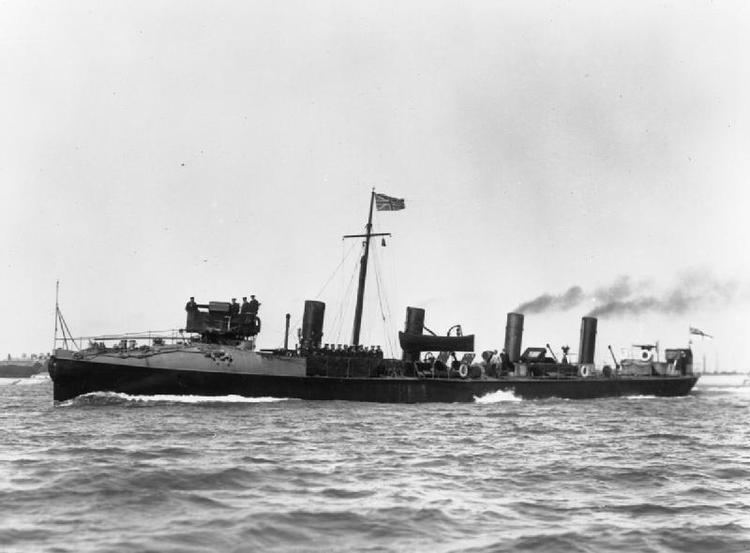Built 1893–1894 | In commission 1893–1912 | |
 | ||
Two Ferret-class destroyers served with the Royal Navy. Ferret and Lynx were built by Laird, displaced 280 tons and were 199 feet (61 m) in length. They were armed with one 12-pounder gun and two bow torpedo tubes. They carried a complement of 53.
Contents
Background
The invention of the self-propelled torpedo by Robert Whitehead and Austrian Navy Captain Giovanni Luppis in 1866, combined with the introduction of small fast torpedo boats (invented by John Ericsson in the late 19th century) posed a threat to battleships: large numbers of torpedo boats could overwhelm a battleship's defences and sink it, or distract the battleship and make it vulnerable to opposing capital ships. Torpedo boats proved devastatingly effective in the 1891 Chilean Civil War.
The defence against torpedo boats was clear: small warships accompanying the fleet that could screen and protect it from attack by torpedo boats. Several European navies developed vessels variously known as torpedo boat "catchers", "hunters" and "destroyers", while the Royal Navy itself operated torpedo gunboats. However, the early designs lacked the range and speed to keep up with the fleet they were supposed to protect. In 1892, the Third Sea Lord, Rear Admiral Jackie Fisher ordered the development of a new type of ships equipped with the then novel water-tube boilers and quick-firing small calibre guns.
Orders
Six ships to the specifications circulated by the Admiralty were ordered initially, comprising three different designs each produced by a different shipbuilder:
Design
These boats all featured a turtleback (i.e. rounded) forecastle that was characteristic of early British TBDs. All six of them were removed from service and disposed of by the end of 1912, and thus were not affected by the Admiralty decision in 1913 to group all the surviving 27-knot and 30-knot destroyers (which had followed on these six 26-knot vessels) into four heterogeneous classes, labelled "A", "B", "C" and "D" classes.
The Ferret-class destroyers were followed by the larger Banshee class which were built by Lairds less than a year later.
